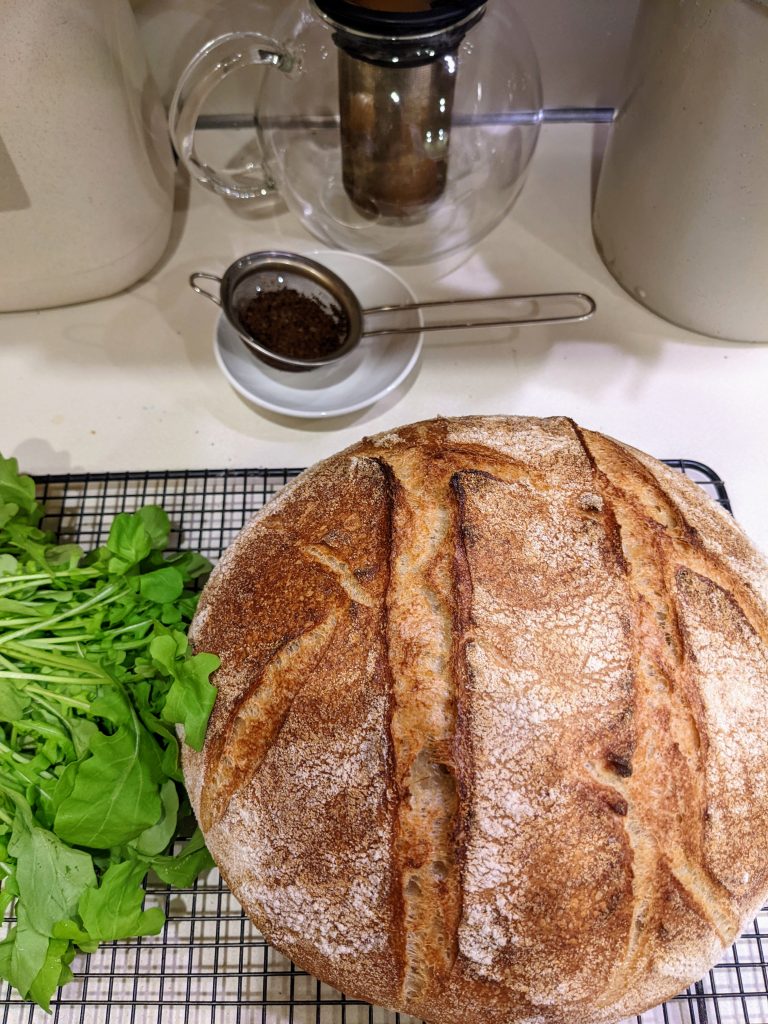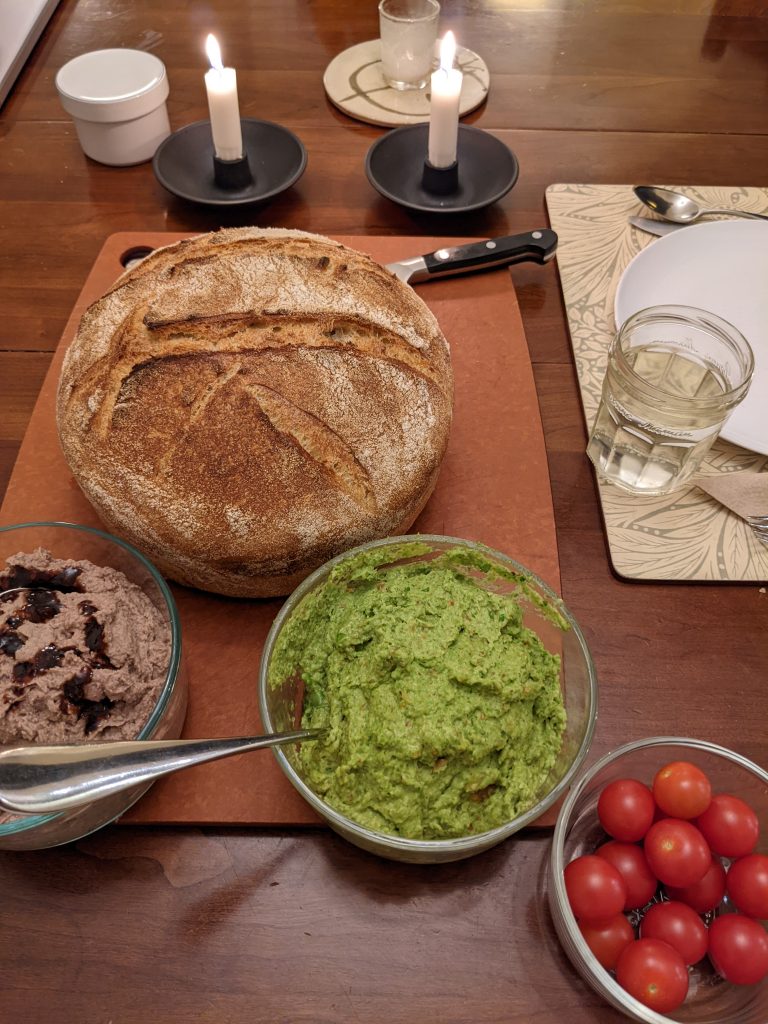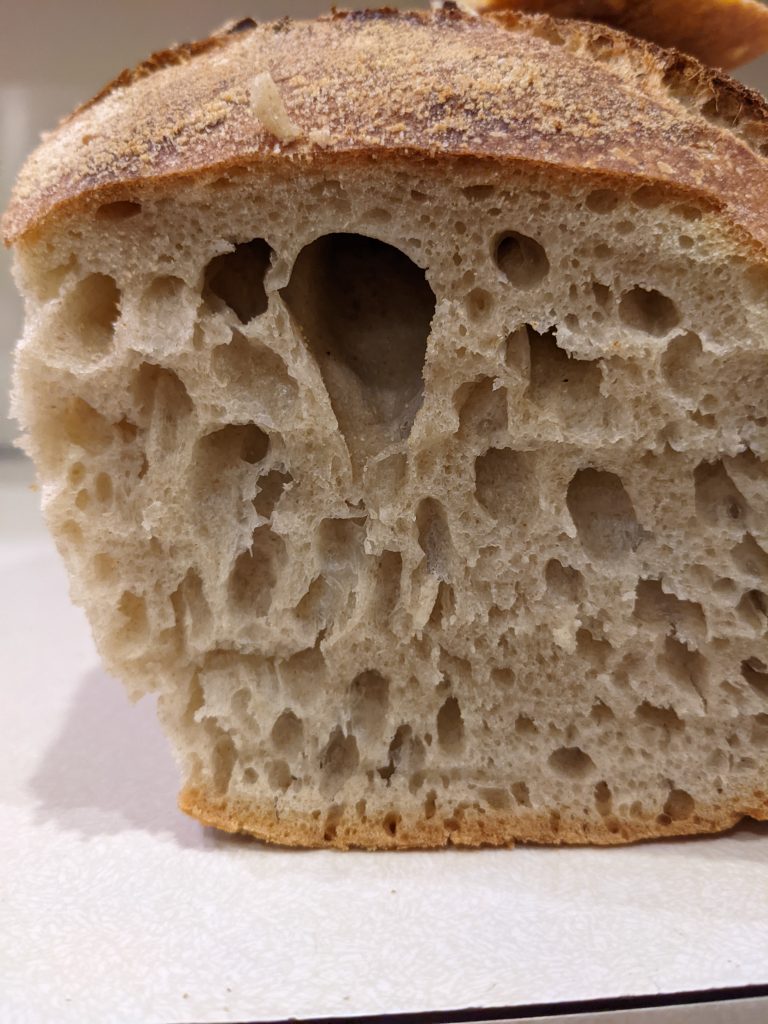
When a baker times his or her bake correctly, the dough will have risen to what appears to be its maximum capacity. The general instruction is that a finger gently pushed into the dough will leave an indentation, but not too much of one. It is a vague description and it takes practice (and making several mistakes) to get an eye for.
But if done correctly, something magical happens in the oven. The dough expands once more. Bakers call it oven spring because the dough goes in one size and exits much larger.


The secret of oven spring lies in the crumb. Look at the air bubbles above. Those were smaller pockets of carbon dioxide and water vapor when they went into the oven. The heat imparted by a 500-degree oven, and a heated baking stone, expand the gases and drive them upward. You can see the bubbles aiming toward the surface. The gluten network made when the bread was kneaded keep the bubbles from escaping. Steam in the oven allows the crust to remain soft so the loaf can expand.
BOING. Oven spring.